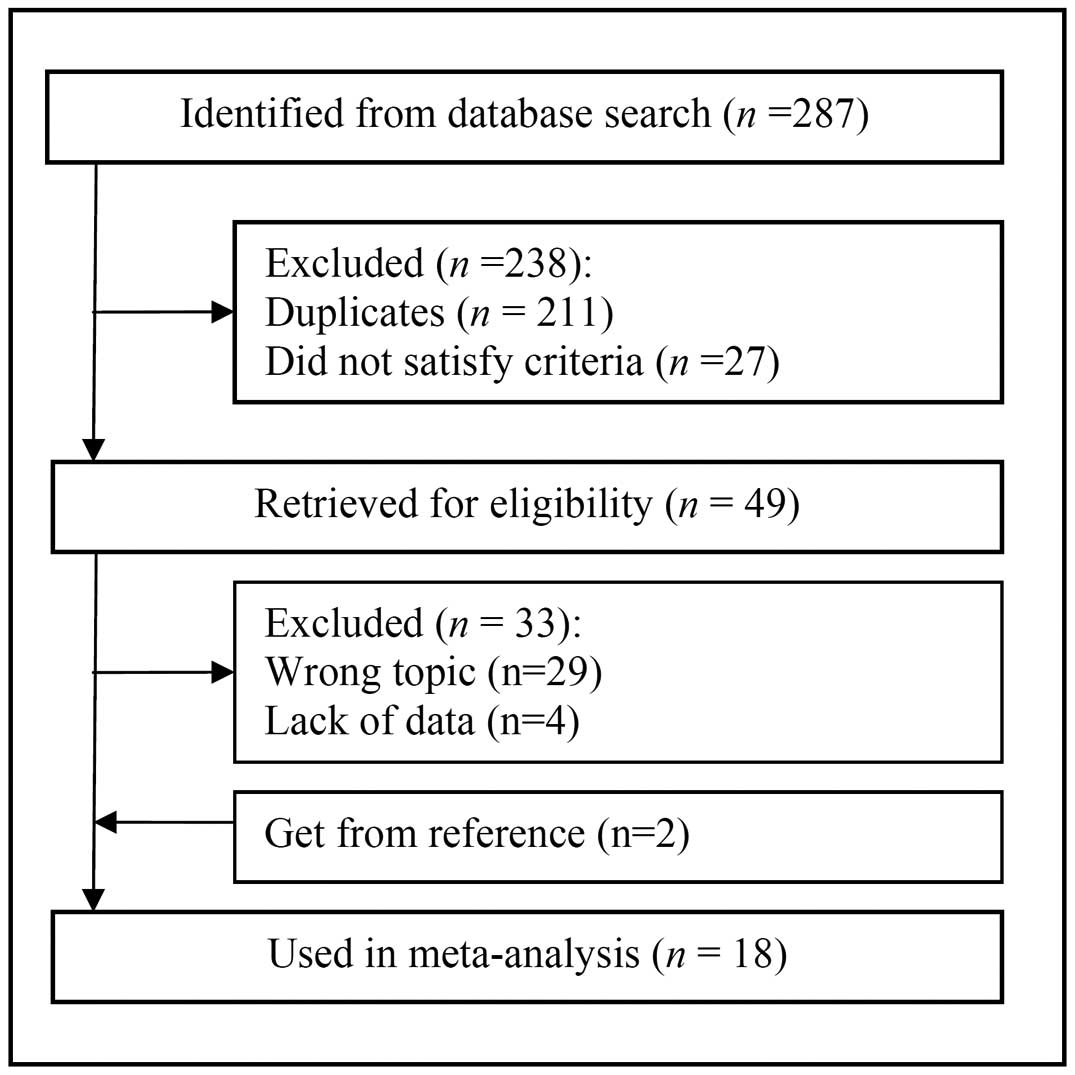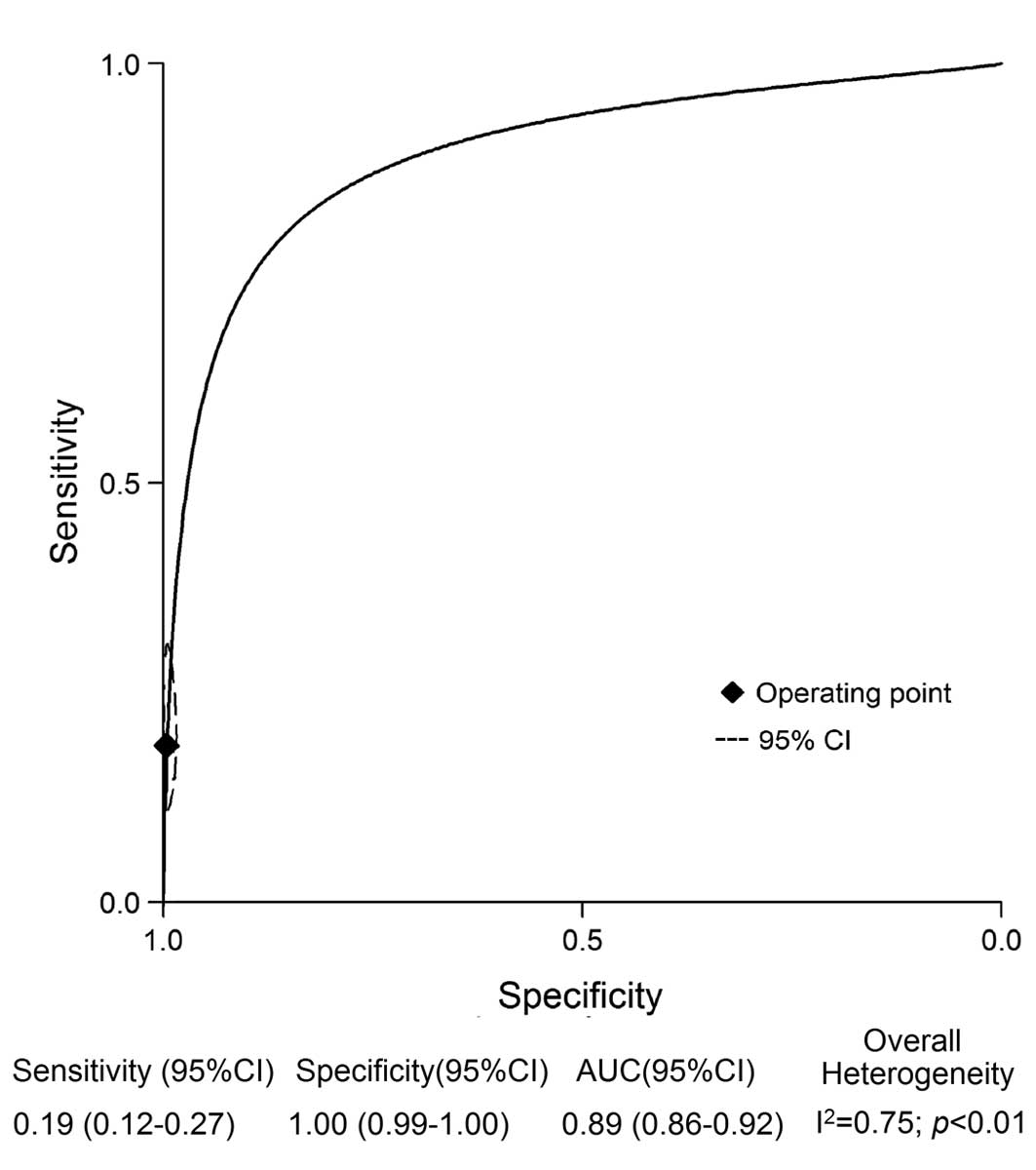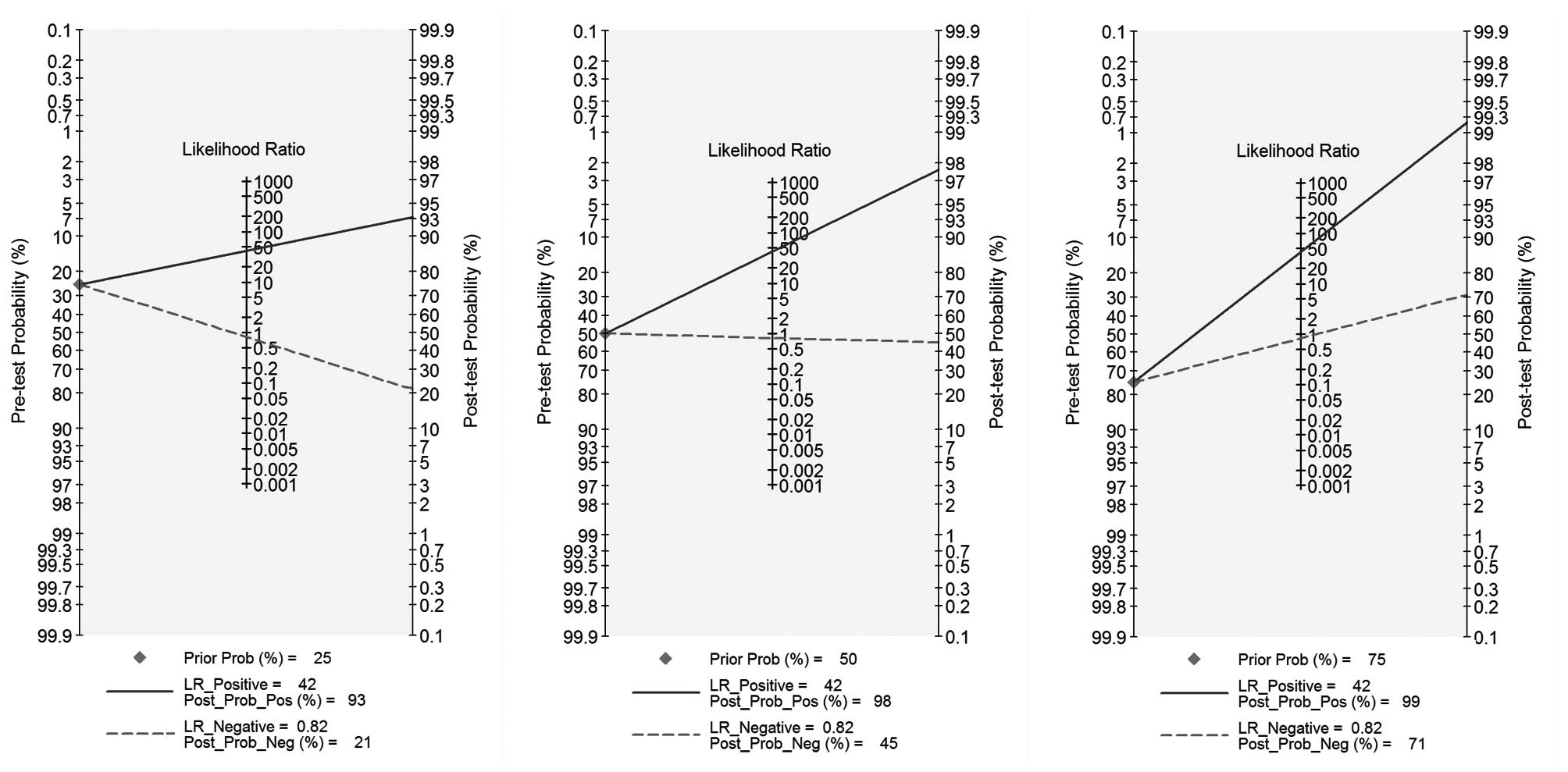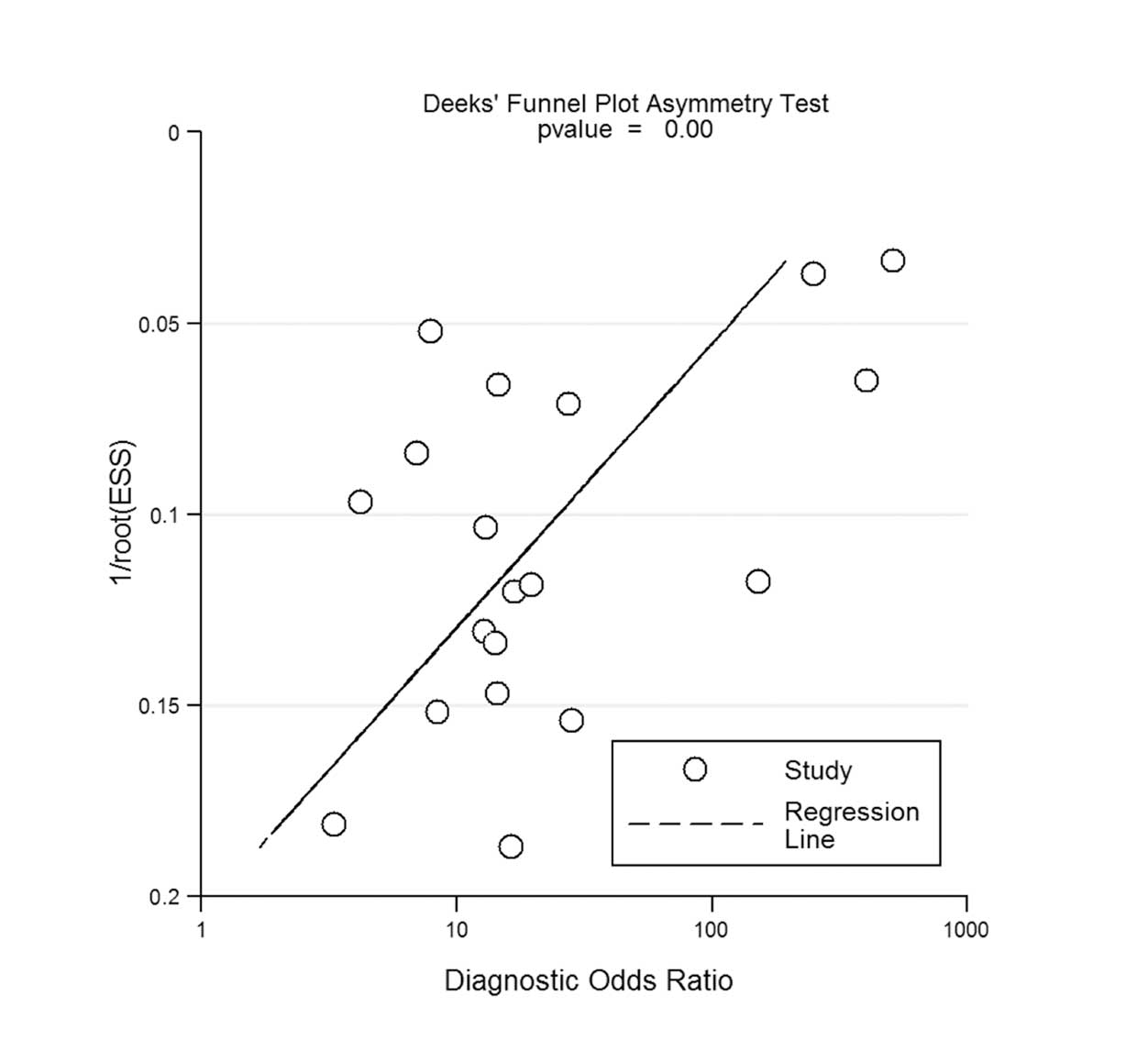|
1
|
Clohisy JC, Calvert G, Tull F, McDonald D
and Maloney WJ: Reasons for revision hip surgery: a retrospective
review. Clin Orthop Relat Res. 188–192. 2004. View Article : Google Scholar : PubMed/NCBI
|
|
2
|
Del Pozo JL and Patel R: Clinical
practice. Infection associated with prosthetic joints. N Engl J
Med. 361:787–794. 2009. View Article : Google Scholar : PubMed/NCBI
|
|
3
|
Hanssen AD, Trousdale RT and Osmon DR:
Patient outcome with reinfection following reimplantation for the
infected total knee arthroplasty. Clin Orthop Relat Res. 55–67.
1995.PubMed/NCBI
|
|
4
|
Mont MA, Waldman BJ and Hungerpord DS:
Evaluation of preoperative cultures before second-stage
reimplantation of a total knee prosthesis complicated by infection.
A comparison-group study. J Bone Joint Surg Am. 82-A:1552–1557.
2000.PubMed/NCBI
|
|
5
|
Trampuz A, Piper KE, Jacobson MJ, et al:
Sonication of removed hip and knee prostheses for diagnosis of
infection. N Engl J Med. 357:654–663. 2007. View Article : Google Scholar : PubMed/NCBI
|
|
6
|
Qu X, Zhai Z, Wu C, et al: Preoperative
aspiration culture for preoperative diagnosis of infection in total
hip or knee arthroplasty. J Clin Microbiol. 51:3830–3834. 2013.
View Article : Google Scholar : PubMed/NCBI
|
|
7
|
Qu X, Zhai Z, Li H, et al: PCR-based
diagnosis of prosthetic joint infection. J Clin Microbiol.
51:2742–2746. 2013. View Article : Google Scholar : PubMed/NCBI
|
|
8
|
Qu X, Zhai Z, Liu X, Li H, Wu C, Li Y, Li
H, Zhu Z, Qin A and Dai K: Evaluation of white cell count and
differential in synovial fluid for diagnosing infections after
total hip or knee arthroplasty. PLoS One. 9:e847512014. View Article : Google Scholar : PubMed/NCBI
|
|
9
|
Patel R, Osmon DR and Hanssen AD: The
diagnosis of prosthetic joint infection: current techniques and
emerging technologies. Clin Orthop Relat Res. 55–58. 2005.
View Article : Google Scholar : PubMed/NCBI
|
|
10
|
Kraay MJ, Goldberg VM, Fitzgerald SJ and
Salata MJ: Cementless two-staged total hip arthroplasty for deep
periprosthetic infection. Clin Orthop Relat Res. 441:243–249. 2005.
View Article : Google Scholar : PubMed/NCBI
|
|
11
|
Leone JM and Hanssen AD: Management of
infection at the site of a total knee arthroplasty. J Bone Joint
Surg Am. 87:2335–2348. 2005.PubMed/NCBI
|
|
12
|
Parvizi J, Ghanem E, Menashe S, Barrack RL
and Bauer TW: Periprosthetic infection: what are the diagnostic
challenges? J Bone Joint Surg Am. 88 Suppl 4:138–147. 2006.
View Article : Google Scholar : PubMed/NCBI
|
|
13
|
Zywiel MG, Stroh DA, Johnson AJ, Marker DR
and Mont MA: Gram stains have limited application in the diagnosis
of infected total knee arthroplasty. Int J Infect Dis.
15:e702–e705. 2011. View Article : Google Scholar : PubMed/NCBI
|
|
14
|
Schindler M, Christofilopoulos P, Wyssa B,
et al: Poor performance of microbiological sampling in the
prediction of recurrent arthroplasty infection. Int Orthop.
35:647–654. 2011. View Article : Google Scholar : PubMed/NCBI
|
|
15
|
Oethinger M, Warner DK, Schindler SA,
Kobayashi H and Bauer TW: Diagnosing periprosthetic infection:
false-positive intraoperative Gram stains. Clin Orthop Relat Res.
469:954–960. 2011. View Article : Google Scholar : PubMed/NCBI
|
|
16
|
Johnson AJ, Zywiel MG, Stroh DA, Marker DR
and Mont MA: Should gram stains have a role in diagnosing hip
arthroplasty infections? Clin Orthop Relat Res. 468:2387–2391.
2010. View Article : Google Scholar : PubMed/NCBI
|
|
17
|
Morgan PM, Sharkey P, Ghanem E, et al: The
value of intraoperative Gram stain in revision total knee
arthroplasty. J Bone Joint Surg Am. 91:2124–2129. 2009. View Article : Google Scholar : PubMed/NCBI
|
|
18
|
Ghanem E, Ketonis C, Restrepo C, Joshi A,
Barrack R and Parvizi J: Periprosthetic infection: where do we
stand with regard to Gram stain? Acta Orthop. 80:37–40. 2009.
View Article : Google Scholar : PubMed/NCBI
|
|
19
|
Ko PS, Ip D, Chow KP, Cheung F, Lee OB and
Lam JJ: The role of intraoperative frozen section in decision
making in revision hip and knee arthroplasties in a local community
hospital. J Arthroplasty. 20:189–195. 2005. View Article : Google Scholar : PubMed/NCBI
|
|
20
|
Virolainen P, Lähteenmäki H, Hiltunen A,
Sipola E, Meurman O and Nelimarkka O: The reliability of diagnosis
of infection during revision arthroplasties. Scand J Surg.
91:178–181. 2002.PubMed/NCBI
|
|
21
|
Banit DM, Kaufer H and Hartford JM:
Intraoperative frozen section analysis in revision total joint
arthroplasty. Clin Orthop Relat Res. 230–238. 2002. View Article : Google Scholar : PubMed/NCBI
|
|
22
|
Spangehl MJ, Masterson E, Masri BA,
O'Connell JX and Duncan CP: The role of intraoperative gram stain
in the diagnosis of infection during revision total hip
arthroplasty. J Arthroplasty. 14:952–956. 1999. View Article : Google Scholar : PubMed/NCBI
|
|
23
|
Della Valle CJ, Scher DM, Kim YH, et al:
The role of intraoperative Gram stain in revision total joint
arthroplasty. J Arthroplasty. 14:500–504. 1999. View Article : Google Scholar : PubMed/NCBI
|
|
24
|
Atkins BL, Athanasou N, Deeks JJ, et al:
Prospective evaluation of criteria for microbiological diagnosis of
prosthetic-joint infection at revision arthroplasty. The OSIRIS
Collaborative Study Group. J Clin Microbiol. 36:2932–2939.
1998.PubMed/NCBI
|
|
25
|
Barrack RL, Jennings RW, Wolfe MW and
Bertot AJ: The Coventry Award. The value of preoperative aspiration
before total knee revision. Clin Orthop Relat Res. 8–16.
1997.PubMed/NCBI
|
|
26
|
Chimento GF, Finger S and Barrack RL: Gram
stain detection of infection during revision arthroplasty. J Bone
Joint Surg Br. 78:838–839. 1996.PubMed/NCBI
|
|
27
|
Feldman DS, Lonner JH, Desai P and
Zuckerman JD: The role of intraoperative frozen sections in
revision total joint arthroplasty. J Bone Joint Surg Am.
77:1807–1813. 1995.PubMed/NCBI
|
|
28
|
Kraemer WJ, Saplys R, Waddell JP and
Morton J: Bone scan, gallium scan and hip aspiration in the
diagnosis of infected total hip arthroplasty. J Arthroplasty.
8:611–616. 1993. View Article : Google Scholar : PubMed/NCBI
|
|
29
|
Qu X, Huang X, Yan W, Wu L and Dai K: A
meta-analysis of 8FDG-PET-CT, 18FDG-PET, MRI and bone
scintigraphy for diagnosis of bone metastases in patients with lung
cancer. Eur J Radiol. 81:1007–1015. 2012. View Article : Google Scholar : PubMed/NCBI
|
|
30
|
Devillé WL, Buntinx F, Bouter LM, et al:
Conducting systematic reviews of diagnostic studies: didactic
guidelines. BMC Med Res Methodol. 2:92002. View Article : Google Scholar : PubMed/NCBI
|
|
31
|
Liberati A, Altman DG, Tetzlaff J, et al:
The PRISMA statement for reporting systematic reviews and
meta-analyses of studies that evaluate health care interventions:
explanation and elaboration. Ann Intern Med. 151:W65–W94. 2009.
View Article : Google Scholar : PubMed/NCBI
|
|
32
|
Berlin JA: Does blinding of readers affect
the results of meta-analyses? University of Pennsylvania
Meta-analysis Blinding Study Group. Lancet. 350:185–186. 1997.
View Article : Google Scholar : PubMed/NCBI
|
|
33
|
Whiting P, Rutjes AW, Reitsma JB, Bossuyt
PM and Kleijnen J: The development of QUADAS: a tool for the
quality assessment of studies of diagnostic accuracy included in
systematic reviews. BMC Med Res Methodol. 3:252003. View Article : Google Scholar : PubMed/NCBI
|
|
34
|
Moses LE, Shapiro D and Littenberg B:
Combining independent studies of a diagnostic test into a summary
ROC curve: data-analytic approaches and some additional
considerations. Stat Med. 12:1293–1316. 1993. View Article : Google Scholar : PubMed/NCBI
|
|
35
|
Huedo-Medina TB, Sánchez-Meca J,
Marín-Martínez F and Botella J: Assessing heterogeneity in
meta-analysis: q statistic or i2 index? Psychol Methods.
11:193–206. 2006. View Article : Google Scholar : PubMed/NCBI
|
|
36
|
Deeks JJ, Macaskill P and Irwig L: The
performance of tests of publication bias and other sample size
effects in systematic reviews of diagnostic test accuracy was
assessed. J Clin Epidemiol. 58:882–893. 2005. View Article : Google Scholar : PubMed/NCBI
|
|
37
|
Pakos EE, Trikalinos TA, Fotopoulos AD and
Ioannidis JP: Prosthesis infection: diagnosis after total joint
arthroplasty with antigranulocyte scintigraphy with
99mTc-labeled monoclonal antibodies – a meta-analysis.
Radiology. 242:101–108. 2007. View Article : Google Scholar : PubMed/NCBI
|
|
38
|
Kwee TC, Kwee RM and Alavi A: FDG-PET for
diagnosing prosthetic joint infection: systematic review and
metaanalysis. Eur J Nucl Med Mol Imaging. 35:2122–2132. 2008.
View Article : Google Scholar : PubMed/NCBI
|
|
39
|
Parvizi J, Adeli B, Zmistowski B, Restrepo
C and Greenwald AS: Management of periprosthetic joint infection:
the current knowledge: AAOS exhibit selection. J Bone Joint Surg
Am. 94:e1042012. View Article : Google Scholar : PubMed/NCBI
|
|
40
|
Berbari E, Mabry T, Tsaras G, et al:
Inflammatory blood laboratory levels as markers of prosthetic joint
infection: a systematic review and meta-analysis. J Bone Joint Surg
Am. 92:2102–2109. 2010. View Article : Google Scholar : PubMed/NCBI
|
|
41
|
Popescu A and Doyle RJ: The Gram stain
after more than a century. Biotech Histochem. 71:145–151. 1996.
View Article : Google Scholar : PubMed/NCBI
|
|
42
|
Anevlavis S, Petroglou N, Tzavaras A, et
al: A prospective study of the diagnostic utility of sputum Gram
stain in pneumonia. J Infect. 59:83–89. 2009. View Article : Google Scholar : PubMed/NCBI
|
|
43
|
Søqaard M, Nørgaard M and Schønheyder HC:
First notification of positive blood cultures and the high accuracy
of the gram stain report. J Clin Microbiol. 45:1113–1117. 2007.
View Article : Google Scholar : PubMed/NCBI
|
|
44
|
Osmon DR, Berbari EF, Berendt AR, et al:
Infectious Diseases Society of America: Executive summary:
diagnosis and management of prosthetic joint infection: clinical
practice guidelines by the Infectious Diseases Society of America.
Clin Infect Dis. 56:1–10. 2013. View Article : Google Scholar : PubMed/NCBI
|


















